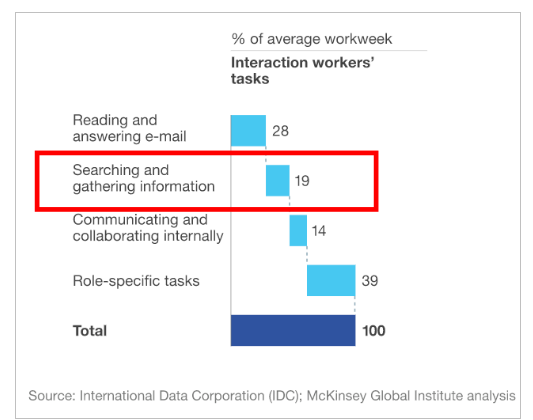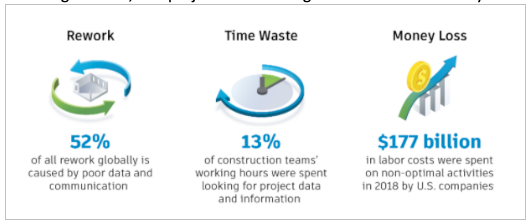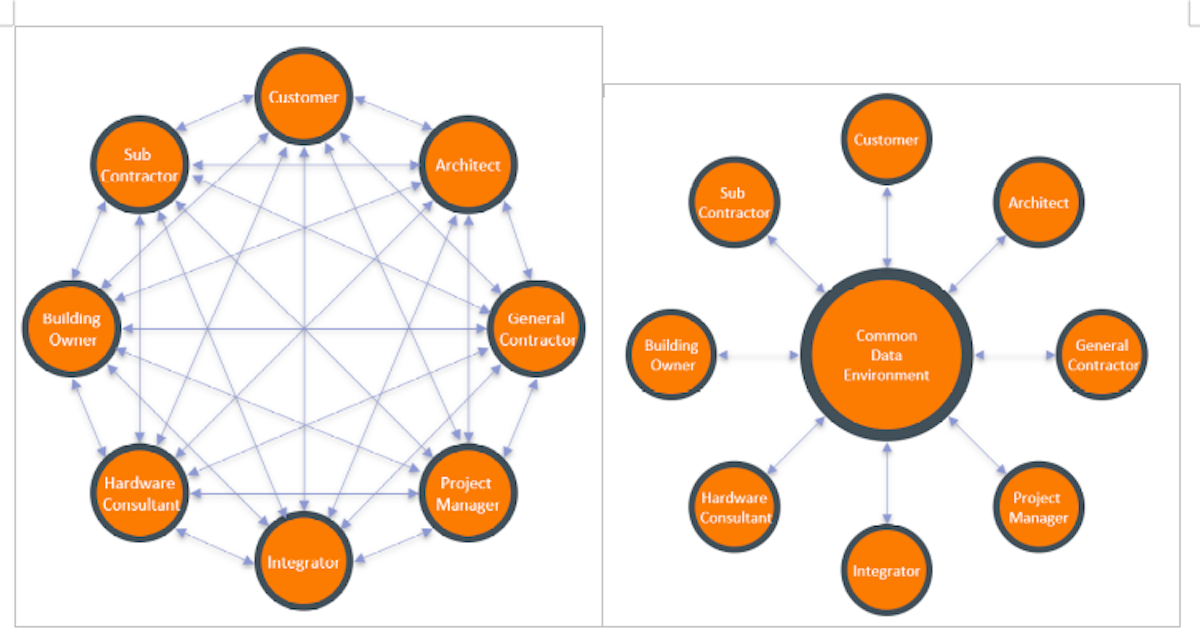Home builders have long depended on drawings and specifications to guide projects from design through construction into turnover and occupancy. But with all that information scattered about, employees can spend as many as 9.3 hours per week searching and gathering documentation, according to a McKinsey analysis. However, if that information can be rendered as structured data aggregated from multiple sources and organized in a common data environment, it could be a key differentiator for the builder.
We spend how much time a day?
Let’s apply how using data efficiently can work for a construction task such as managing door hardware. There’s a lot of information hunting when trying to decipher which hardware goes where with drawings, floor plans of the set in one group of sheets, and the door schedule in another. Furthermore, the door hardware specs are in another document, as is the separate PDF with information about the electronic safety and security devices. Even if the project is using a building information modeling workflow, the team still must go back-and-forth between model, drawing, sheets and the specifications. Hours and sometimes days can be spent reviewing all the door openings with various information sources.

Unstructured vs. structured data
So understanding the difference between structured and unstructured data becomes necessary for more efficient use of data.
Unstructured data doesn't have a predefined format or framework, making it difficult to collect, process and analyze. Usually it is mostly text, but it can also include data, resulting in inconsistencies and ambiguities that make it difficult to understand using conventional programs. Word documents, PDF files, stand-alone photos, and videos are considered unstructured information.
Structured data (such as a spreadsheet or database) is highly formatted, making it easier to use, search, filter, sort and report. Each field is individual and can be accessed along with data from other fields making structured data extremely powerful.
Unstructured data usually needs to be put into indexers to make it discoverable. That chore requires time and effort, whereas structured data is simpler and can connect it to other structured data sources. What would be even easier is to have information about each opening, such as height, width and products connected to an opening as structured data, making it searchable and usable.
Common Data Environments
Project participants traditionally collaborate by sending information back-and-forth. Challenges in this methodology include the following:
- Duplication: Let’s say the project manager asks for some information from the general contractor (GC). The building owner may need some or all the same information, so the GC sends a copy (i.e., a version) to the building owner. Now there are two versions of that information.
- Inaccuracy: Let’s use the example above and add a twist: The GC changed the information in the copy sent to the building owner. Now, not only are there two copies, but they also no longer match. Which one takes precedent? How does one know which one to use, or how many versions exist.
- Errors, omissions, and rework: Let’s say someone performed work based on one version of the information. Now whatever work was performed based on that erroneous information must be removed and replaced. This rework takes time, money and effort which may not necessarily be accounted for in the project.
A Common Data Environment (CDE) is a digitalized centralized location for information. With vast amounts of digital data being created and shared during a project’s lifecycle, the CDE becomes an ideal place to promote a collaborative working culture, as they’re secure and can provide audit trails around changes.
Impact of inefficient processes
Across any project, inefficient processes, poor data and communication will lead to errors, rework, and cost overruns. According to a report from FMI and Plangrid, time spent on non-optimal activities including rework and project data hunting will cost U.S. industry an estimated $177.5 billion.

If we look at the $177.5B in labor costs and apply the hardware cost percentage to the labor, that means $1.775B in labor is wasted around the installation of door openings and hardware.
Now what?
It was less than 20 years ago that a gigabyte of data was considered an enormous amount. We can now store one terabyte (1000 gigabytes) in our smartphone. How can we as the door hardware industry combat the influx of data and information? How can we use information to our advantage and help make our projects more efficient?
Steps to take:
1) Embrace structured data: It may not be possible to put all your information in a structure. However, if you can put data into a structure, it’s easier to query, display and report. Additionally, where you can, use tools that connect unstructured data to a structured data source.
2) Implement a structured data analysis platform: Tools such as Microsoft’s Power BI or Tableau can be used to aggregate data from multiple data sources. Together, these tools dissect and display that data as needed.
3) Implement a CDE: This can mean a document management system, an intranet sharing system, a data warehouse, or other technologies.





